You might think you know your keyboard, but how well do you really know it. There’s likely plenty you’ve been oblivious to this whole time. Do you know its deepest secrets? Do you know its hopes and dreams? Do you even know its favorite movie? OK, OK. Enough joking.
The truth is, it’s nothing short of criminal to know so few facts about QWERTY keyboards when we use them so regularly. They’re our portal to our success after all. But we get it. Life gets in the way and as long as you get your work done, you don’t have to ask any questions.
And that’s where we come in. Because we do so much more than just supply you with the best wireless keyboard and mouse combo. And, more specifically, we even do more than just uncover the best wireless gaming mouse and keyboard.
We’re a reservoir information. We educate the masses. Maybe too far, but you the gist. We’ve asked the questions and gotten the answers so all you have to do is sit back, relax, and enjoy these 20 facts about QWERTY keyboards you probably didn’t know.
20 facts about keyboards you probably didn’t know!
1. The origins of the QWERTY layout
The origins of the QWERTY layout say a lot more about us than we’d probably like to admit. We often think, since we use this layout, it must be the fastest, most efficient layout. I mean, it’s widely adopted. How can most people be that dumb? (You’d be surprised....)
The layout was actually invented by a gentleman named Christopher Sholes in 1872. He was designing a typewriter, and apparently, when keys were in alphabetical order, people typed too fast. The typewriter would jam. This is why we can’t have nice things.
So, the idea behind this layout is actually to slow people down and minimize adjacent keystrokes. And, by the time we had computers, the layout wasn’t even contested.
2.The Dvorak keyboard layout
Most of us have blindly the QWERTY layout. We’ve bought in, as they say. And, honestly, once people subscribe to something with this kind of blind conviction, there’s absolutely no hope at superseding it. And the Dvorak layout is ample evidence of that.
In 1936, August Dvorak was the first person to challenge the QWERTY layout with an alternative. He created his own patented configuration of keys intended to minimize movement and expedite typing while also reducing repetitive strain injuries.
In fact, even to this day, his layout is endorsed and utilized by some. And, should you be curious about trying it, most Operating Systems offer the layout. Though, admittedly, its user base is niche and mostly composed of programmers and typists.
3. Overly complicated typing
As far as most complicated typing, Japanese and Chinese keyboards take the cake. QWERTY keyboards are relatively simple. You hit keys. You get letters on the screen. And that’s it. But, in China and Japan, there are a few extra steps.
They use specialized input methods to type. You type simplified characters or Latinized versions of the word you want to type, then the language driver displays the words you can use. I guess they haven’t heard of working smarter and not harder.
4. Early adopters

Everything cutting edge has those people who were part of the vanguard. And, while they can be obnoxious about it, these early adopters are sometimes people with vision.
One such person was Mark Twain, who was among the earliest adopters of the typewriter. He wrote his book Life on the Mississippi on one in 1883. As for computers, Douglas Williams was among the first, having written Dirk Gently’s Holistic Detective Agency on Macintosh in 1987.
100 years apart, these two writers both pioneered how typewriters and computers are used today. Imagine what it’ll be in 2087...
5. The longest typable words with one hand
Ever wonder what the longest words you can type with one hand are? While it’s not exactly the funnest game to kill time with. It is a way to kill time nonetheless. But, if you just want to know, we’re more than happy to spill the beans.
With a QWERTY keyboard layout, on your right-hand polyphony is as long as it gets, but on your left-hand you can type multiple 12-letter words, including stewardess. With the Dvorak layout, 14-letter words like overemphasized are possible with just the left hand.
So suck it, QWERTY.
6. Keyboard fashion
Probably not exactly a shocker, you might still be surprised by how common it is to decorate and dress keyboards on laptops up. People use vinyl stickers, particular younger users. I guess there’s no sanctity kids won’t violate. But they don’t stop at keyboards. Oftentime, the entire laptop is covered. It’s like getting it tattooed. Kind of.
7. Keyboard filth
This might be a little less interesting and funny and more stomach churning, but it’s worth pointing out. Research suggests your keyboard could very well be hosting more germs than a toilet seat. THAN A TOILET SEAT.
A study discovered that 4 out of 33 keyboards tested were deemed actual potential health hazards. And one even contained a volume of germs higher than what is found on a toilet seat. Some had mouse feces in them. And it didn’t get any prettier. Trust us.
So how can one prevent this from occurring? Wash your hands and clean your keyboard regularly. Seriously. It’s not that hard, people!
8. Every time you space, 600,000 others do the same thing
It should come as no surprise that the spacebar is the most commonly used key. And, according to research, 18% of all keystrokes are to hit the spacebar. This means you never, ever type alone. Every 1/20th of a second, the space bar is hit 600,000 times. It’s pretty amazing to think about if you ask us!
9. The shortest space keys
Not every nation has the same sized keys. And, if you were wondering who has the shortest spacebars, as I’m sure everyone was dying to know, then the answer is Japan. It’s significantly shorter than on any other keyboard layout on earth.
There reason is Japanese keyboards necessitate switching between Latin/Roman letters and Japanese letters. To enable this function, more keys are actually required. They are placed next to the spacebar, which in turn truncates the key.
But, as we all know, size doesn’t matter.
10. Junk keys
There are actually keys still put on keyboards to this day that are, for lack of a better word, useless. In fact, there are 4 primary keys that are worth focusing on.
The first is System Request (SysRq or Sys Req). Created in 1980, when IBM computers typically ran a few operating systems, this key was designed to switch between them. But, since then, it serves no function and is only really used in programming.
Print Screen (PrtScr or PrntScrn) is another one. It’s often used in conjunction with System Request. Originally, it was intended to capture the screen and print out its image. Today, it’s used primarily to capture the screen and save it to the clipboard. At least it found work.
The third is Pause/Break. This is the progeny of the 19th century telegraph. Back then, the electrical circuit had to break at certain moments. Today, it has no real utility and is only exploited in programming, shortcuts and games.
11. The mystery of Scroll Lock (ScrLK)
This is the fourth useless key, but it’s intriguing enough to earn its own individual spot and evaluation on this list. The reason is simple: it never really had a use or application. Not even when it was first implemented.
Initially, it was supposed to enable users to lock page scrolling with arrow keys. But, since being included in keyboard layouts, it’s never really done its job. These days, people don’t use it for anything but keyboard shortcuts.
12. The most efficient keyboard layout in the world
We’ve already discussed that the QWERTY layout was designed to be intentionally inefficient. So, it should come as no surprise, that there is a layout that’s widely touted as being the most efficient in the world. And it’s known as Turkish F.
Designed by İhsan Sıtkı Yener in 1955, the inventor utilized a scientific approach to gauge letter frequencies in the Turkish language. Thus the fastest keyboard layout was born. It provides optimal balance between both hands.
In fact, it’s broken 14 world records in typewriting championships (I guess that’s a thing) between 1957 and 1995. Interestingly, it’s still not the most commonly used layout in Turkey. Turkish Q, an adaptation of standard QWERTY, retains that title.
13. The OG keyboard
IBM and Lexmark introduced the model M in 1984. Nothing’s been the same since. Commonly considered the OG modern day keyboard, this was truly innovative piece of technology that deserves every ounce of recognition and respect it gets.
The revolutionary features of this include:
- Separated number section
- Separated arrow keys
- Separated row of function keys
People were easily impressed back then, I suppose.
14. Keyboard computers
Before there were laptops, before there were tablets, before there were even smartphones, there were keyboard computers. And, to some, this may sound like the stone age, but that doesn’t mean they don’t deserve respect. In many ways, they paved the way.
In fact, in the 80s and early 90s, these computers that somehow fit into bulky keyboards were all the rage. That is, until they were usurped by PCs in the mid-90s. Things kind of snowballed from there. But you probably don’t need us to tell you that.
15. The fastest typer on this planet

Currently, the fastest typer on earth is a woman named Barbara Blackburn, who types in English. However, Sean Wrona set the unofficial world record for typing over a minute and 50 minutes intervals. There’s footage of them breaking the record on YouTube if you’re interested.
The problem with this is there isn’t an exact science or set of metrics for measure typing speed. It’s contingent on the language, layout, and keyboard itself. One thing that’s fact, however, is that many of the fastest typers in the world use the Dvorak layout.
16. Editing keyboards
There are special keyboards for pretty much any work you need to do on a keyboard. If you’re a gamer, there’s a keyboard for you. And if you’re a video editor, there’s a keyboard for you, too.
In fact, there are specialized keyboards commonly used in movie studios, design agencies, and music studios called editing keyboards. The keys on these keyboards perform functions and provide additional information for the apps and environments they’re used in.
17. The greatest (and only) keyboard monument in the world
Now, if you thought you knew how hard geeks could geek out, you’re in for a surprise. Believe it or not, someone actually made a monument for the QWERTY keyboard. More specifically, it was erected in Yekaterinburg, Russia. That’s what you get when you mix vodka with nerds.
It’s called “Pamyatnik Klaviature” and it’s made of stone. The locals make wishes when they jump from key to key, and when they want to reset their lives, they jump from CTRL to ALT to DEL. I suppose that’s one type of Holy Trinity.
18. CONTROL, ALT, DELETE
One of the most famous and widely used keyboard shortcuts for a soft reboot or closing program dialog on Windows, the idea for it is attributed to David Bradley of IBM.
In fact, it was originally implemented for safety so it wasn’t actually triggered. The reason this combination was chosen is because, on the IBM PC 5150, it was impossible to hold the keys down using a single hand. So you had to consciously activate it.
19. Keyboards for your health
In what is probably a very recent health hazard for our species, sitting too long and typing on the average computer can actually be severely detrimental to your health. It can lead to strains and chronic conditions that are uncomfortable and painful to manage.
That’s why people have started getting ergonomic keyboards. This split-keyboard with tilted surfaces is supposed to reduce the amount of damage prolonged periods of typing can do. But, let’s be honest, nothing beats a walk when the strain starts getting to you.
20. Strangest keyboard layout

The strangest keyboard layout is easily the French layout. To get a period, you have to hit the combination shift + ;. And that’s just to get a period. But there are other things that are needlessly complicated about this layout.
The digits can only be produced when holding the shift key down. There are keys for letters that are never used in the language, and at the same time, letters that are commonly used don’t have designated keys. Quotations marks are missing. You don’t always get what you type.
Et cetera. Et cetera.
This is why the French Culture Ministry started working on a new national layout in 2016.
Now that you know these obscure 20 facts about keyboards...
...appreciate what you have while you have it. Whether you want a wireless gaming mouse and keyboard or an editing keyboard, just know each keyboard has a whole host of functions that can put you on the express path to success.
And, if you’re interested in a wireless keyboard, you can’t go wrong with the OMOTON Ultra-Slim Bluetooth keyboard. There’s no relationship more intimate than the one you build with your keyboard. So be a gentleman and take some to, like, really get to know it.
It’s the least you could do.







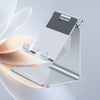

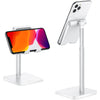
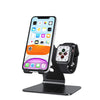
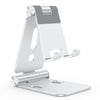

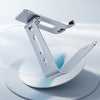

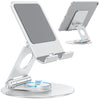
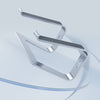
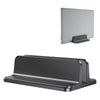
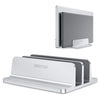

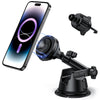
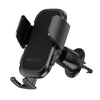

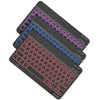
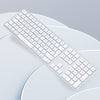

![[iOS System] Seamless KB066](http://omoton.com/cdn/shop/files/B00B24I4II-1_100x.jpg?v=1686815508)
![[Mac System] Seamless KB066](http://omoton.com/cdn/shop/files/B09899K4L6-1_c724630c-c160-4901-9900-f670acc91416_100x.jpg?v=1686732854)
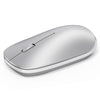
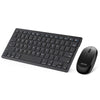
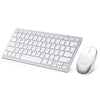
![[2 pcs] Full Protection A020-iPad Pro 11](http://omoton.com/cdn/shop/products/3a69674b6a96497b2ffd7f3025a80d58_e9954f3e-86f5-43e6-9a80-575bcfebd158_100x.jpg?v=1686381536)
![[2 pcs] Full Protection A017 - iPad 10.2 inch](http://omoton.com/cdn/shop/files/61tTSoyyuuL._AC_SL1500_100x.jpg?v=1686021560)
![[3 pcs] Rugged & Robust A013-iPhone 11/XR](http://omoton.com/cdn/shop/files/61po0_qv46L_100x.jpg?v=1686032850)
![[3 pcs] Rugged & Robust A013-iPhone 14](http://omoton.com/cdn/shop/files/16c0b02250912a03578c8b2af6825f11_100x.jpg?v=1686708163)
![[3 pcs] Rugged & Robust A036-iPhone 14 Pro](http://omoton.com/cdn/shop/files/1_2_100x.jpg?v=1686022078)
![[3 pcs] Rugged & Robust A013-iPhone 14 Pro Max](http://omoton.com/cdn/shop/files/1_2_2_100x.jpg?v=1686023071)
![[3 pcs] Rugged & Robust-iPhone 13](http://omoton.com/cdn/shop/files/71HO0AZn0BL_100x.jpg?v=1688522739)
![[3 pcs] Rugged & Robust-iPhone 13 Pro](http://omoton.com/cdn/shop/files/71pE0jfT24L._AC_SX679_100x.jpg?v=1688523892)
![[3 pcs] Rugged & Robust-iPhone 13 Pro Max](http://omoton.com/cdn/shop/files/71c1zssdVHL._AC_SX679_100x.jpg?v=1688527213)
![[3 pcs] Rugged & Robust A024-Samsung Galaxy A14](http://omoton.com/cdn/shop/files/1_2_68d89e60-61af-4cba-9867-9a91941aee01_100x.jpg?v=1686030778)










